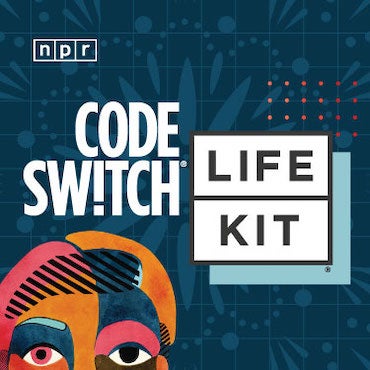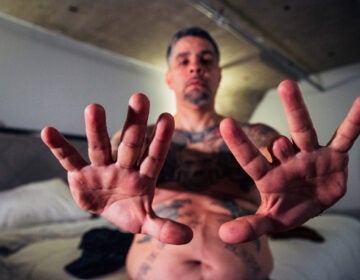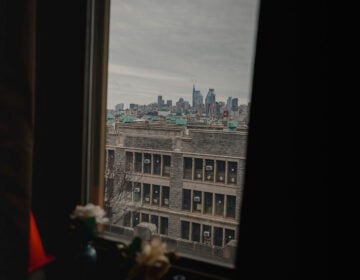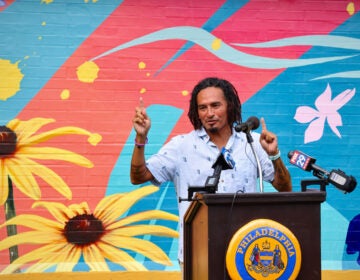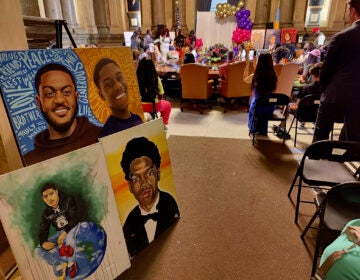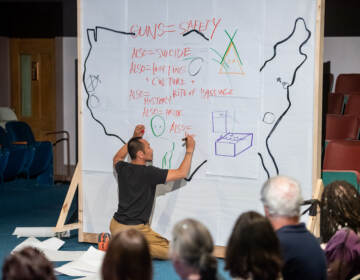What would a future without guns look like? Ask an artist
Ten artists were asked to invent a future world that doesn’t have guns. Their responses range from spiritual to science fiction fantasy.
From Philly and the Pa. suburbs to South Jersey and Delaware, what would you like WHYY News to cover? Let us know!
What if there were no guns? What would that world look like?
The University City Science Center asked 10 artists to consider such a future. Visions of science fiction fantasy, communal healing, urban rebirth and spiritual emancipation in these “Futures Without Guns” are on display at Quorum, the center’s meeting and community space at 36th and Market streets.
The entrance to the building is adorned with a large-scale photograph of two Black males against a night sky, their naked torsos speckled with light like the stars surrounding them.
Artist Mikael Owunna said the figures represent victims of gun violence who have transcended into celestial beings to act as guardians for people on Earth.
“It’s a collective prayer,” Owunna said. “The work is bringing people in, leading us into this emancipatory future.”
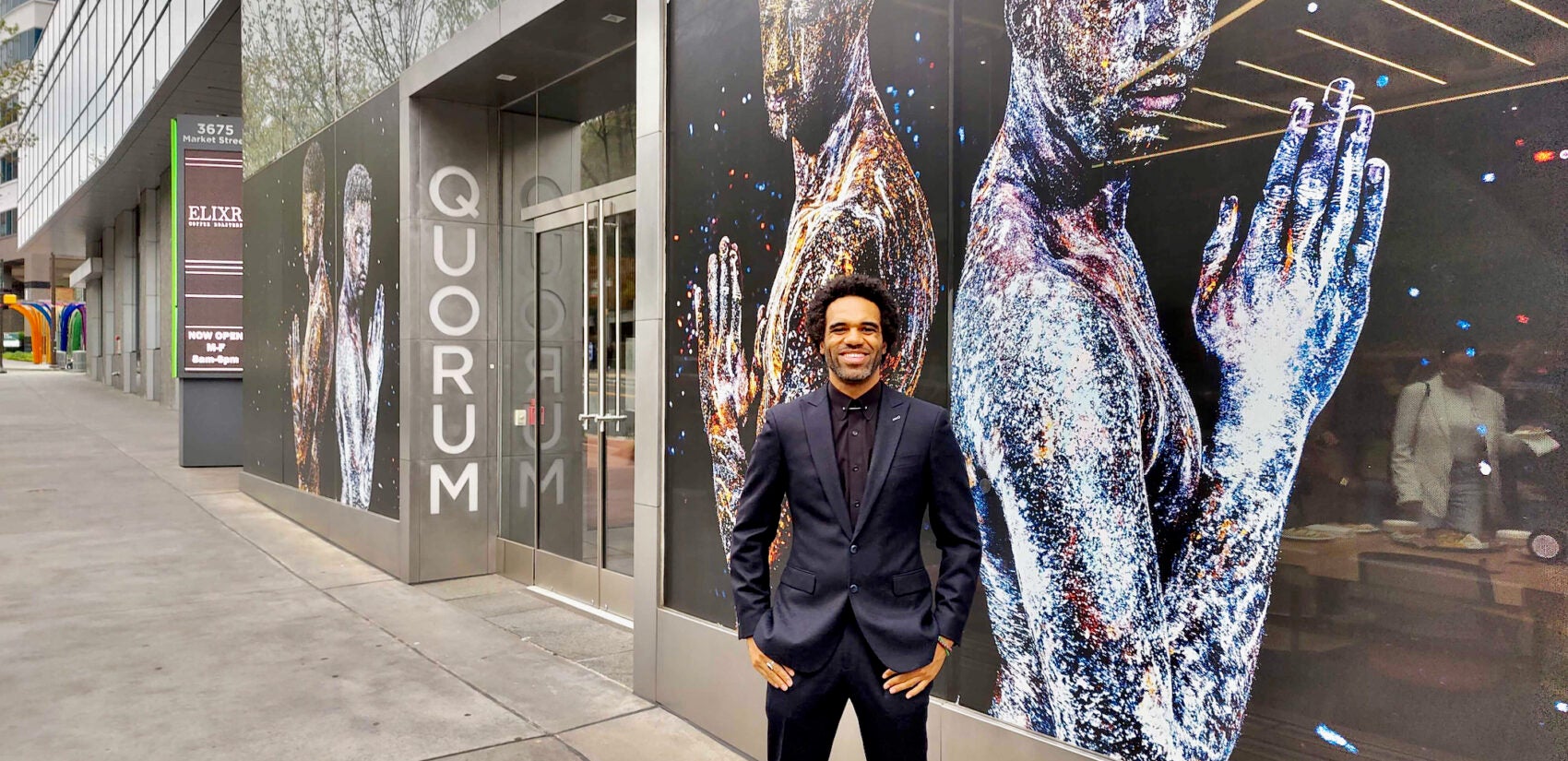
Owunna, who trained as an engineer, developed an ultraviolet photography process that photographs pigments invisible to the human eye. The figures in the image were adorned with such body paint and photographed in the dark.
Owunna said his mural is rooted in the spiritual traditions of the Igbo people of his native Nigeria.
“Within that tradition it’s understood that we don’t just have our physical bodies, but we also have these spiritual bodies that are invisible to the human eye,” he said. “How do we visualize these immaterial bodies, that are invisible to the human eye, across dimensions?”
“Futures Without Guns” is the Science Center’s first art exhibit since it closed the Esther Klein Gallery across the street in 2022. Curator Angela McQuillan commissioned artists to create speculative work based on the reality of gun violence.
“I don’t think you could manifest a reality unless you can actually imagine it,” she said. “Obviously, artists can’t solve the issue of gun violence. But what they can do is provide creative inspiration.”
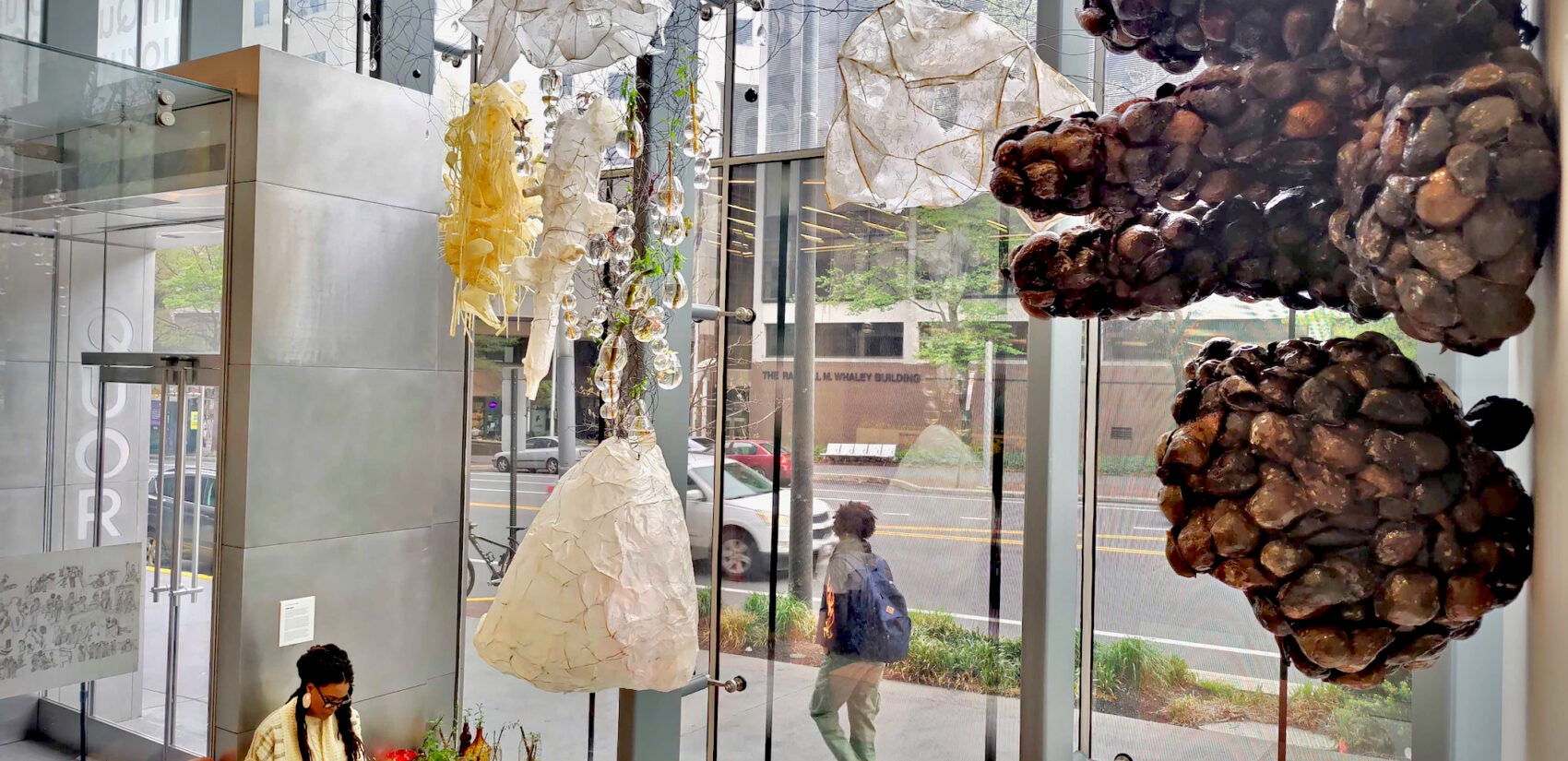
For the exhibition, McQuillan put together a panel of Philadelphians who had been directly impacted by gun violence to review the artists’ proposals and offer feedback.
“It wasn’t all positive feedback, but it was very helpful in trying to make an art exhibition about this topic without inducing trauma,” she said. “A lot of the works changed significantly based on the feedback.”
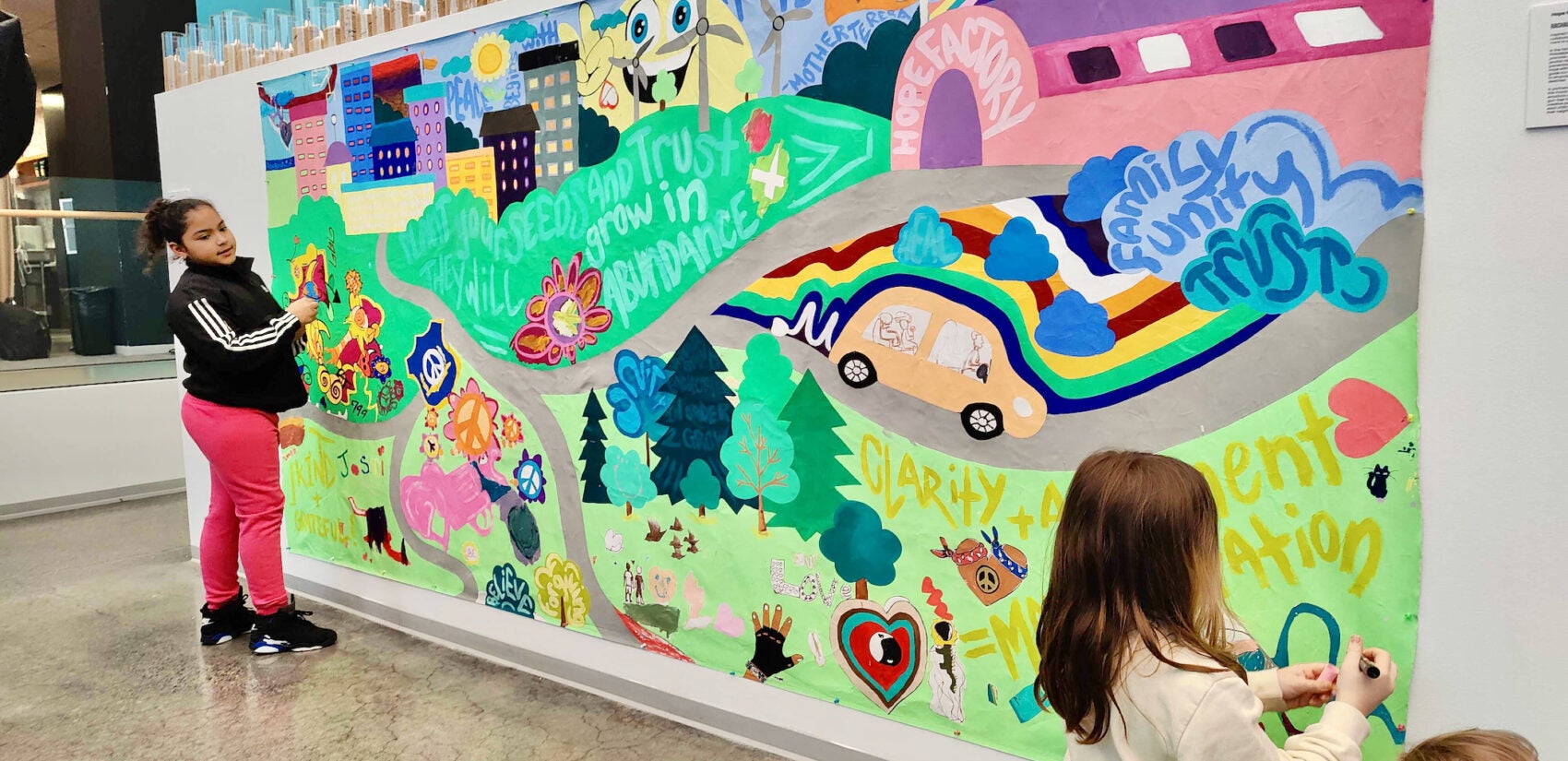
The futures imagined by the artists are not always utopias. Tim Portlock, a former Philadelphia-based artist who now lives in Madison, Wisconsin, used computer-generated imagery to create a large-scale image of a future Philadelphia. The imagined cityscape was profoundly scarred by an undescribed catastrophe and is now reviving in a post-guns world.
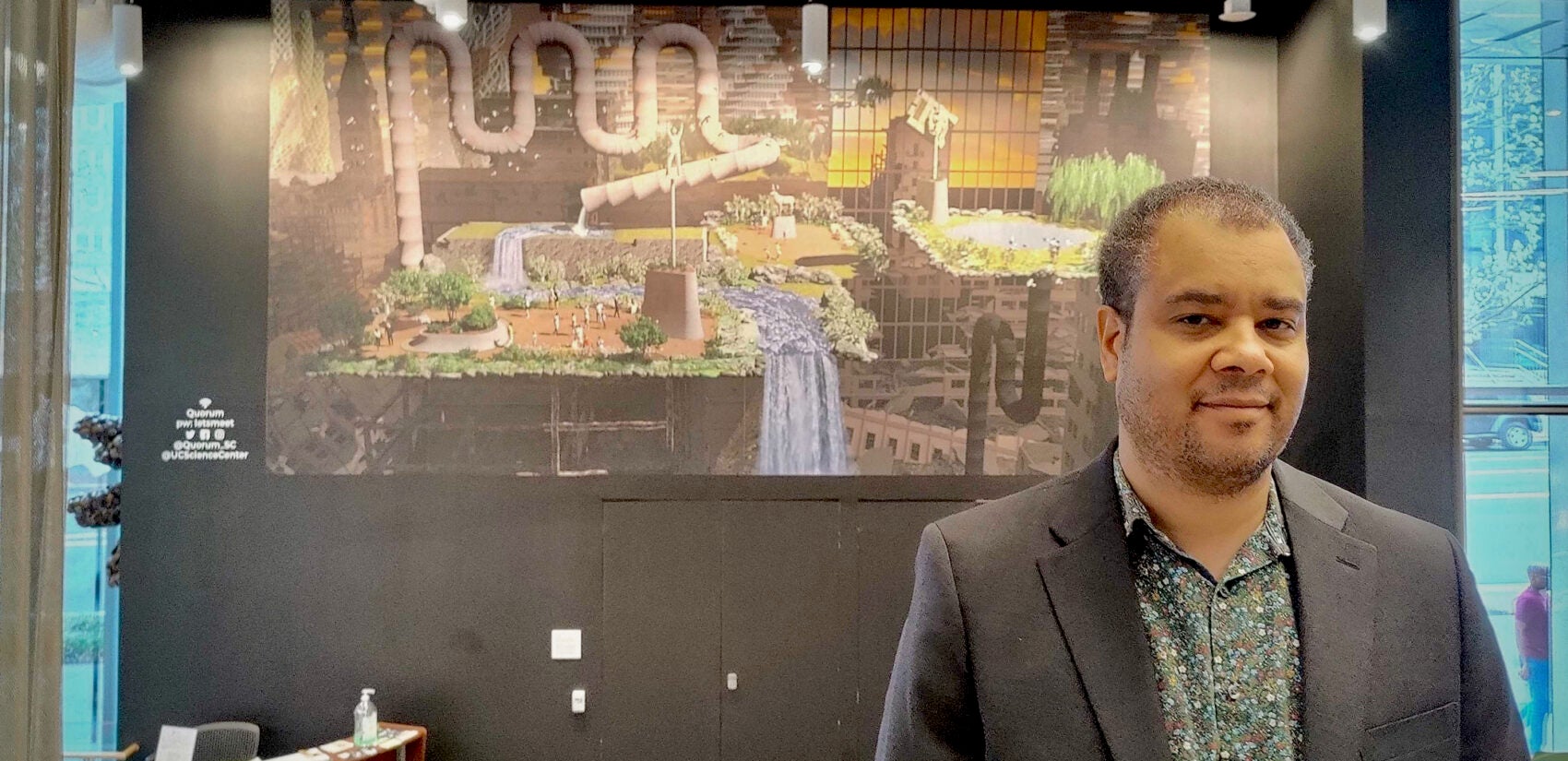
This vision of Philadelphia suggests guns will make the city worse before it can get better. Portlock was inspired by Australia, which in 1996 passed strict gun laws after a catastrophic shooting on the island of Tasmania left 35 people dead. Since those laws were passed, homicides and suicides by gun have reduced by about half, although a downward trend had begun prior to 1996.
Portlocks’ “Time After the Hunter” depicts a city both in ruin and reborn.
“In the piece there are remnants of the past version of the city with guns when this event took place,” he said. “Then there’s the new version of the city that came after that.”
Natalie Hijinx, a Philadelphia artist and member of the collective Vox Populi, dipped into her love of science fiction and Gene Roddenberry (“Star Trek”) to create “Long Action,” a multimedia sculptural piece set in a future dominated by a decentralized artificial intelligence.
But instead of destroying humanity in a technological dystopia, this benign AI devotes itself to rescuing mankind from itself. Called the Essensees, the collective intelligence engineers a super fungus that feeds on gunpowder, quickly rendering the world’s guns useless.
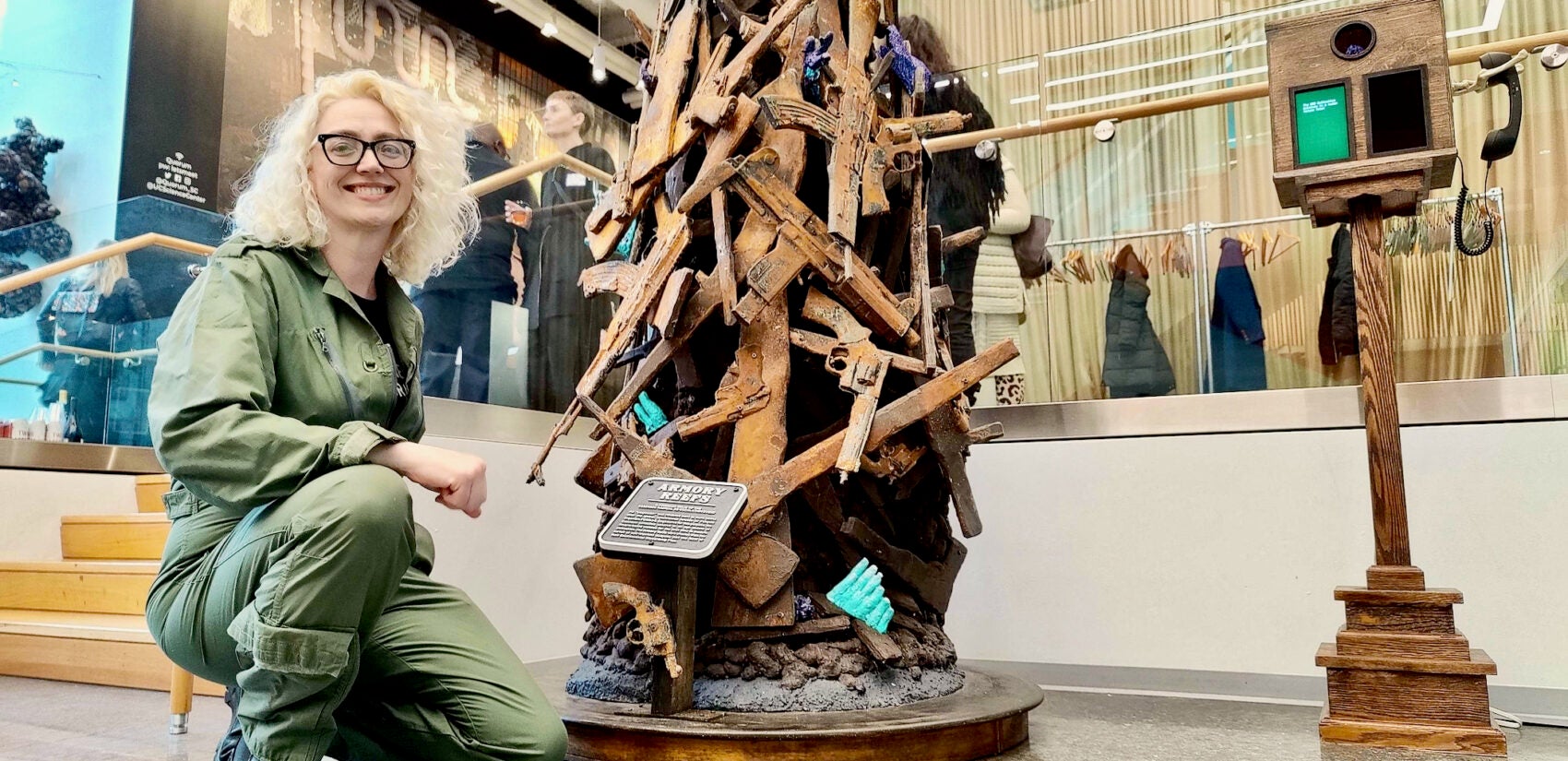
In the future created by Hijinx, the now obsolete guns are dumped into the ocean to become beds for coral reefs. She created a mock-up of what that reef might look like with deteriorating guns molded out of foam.
“Often my work ends up darkly funny,” she said. “I do like to address serious issues, but I don’t want to be serious about it. No one wants to be preached at. So how can I engage people in this conversation I want to have about very real, maybe terrifying futures?”
Perhaps the most recognizable name in the exhibition is Lynn Hershman Leeson, a feature filmmaker known for her futuristic theatrical releases with actress Tilda Swinton, “Conceiving Ada” (1997) and “Teknolust” (2002).
For “Futures Without Guns,” Leeson made a relatively simple short film of a young girl preparing for a day at school during which nothing out of the ordinary happens.
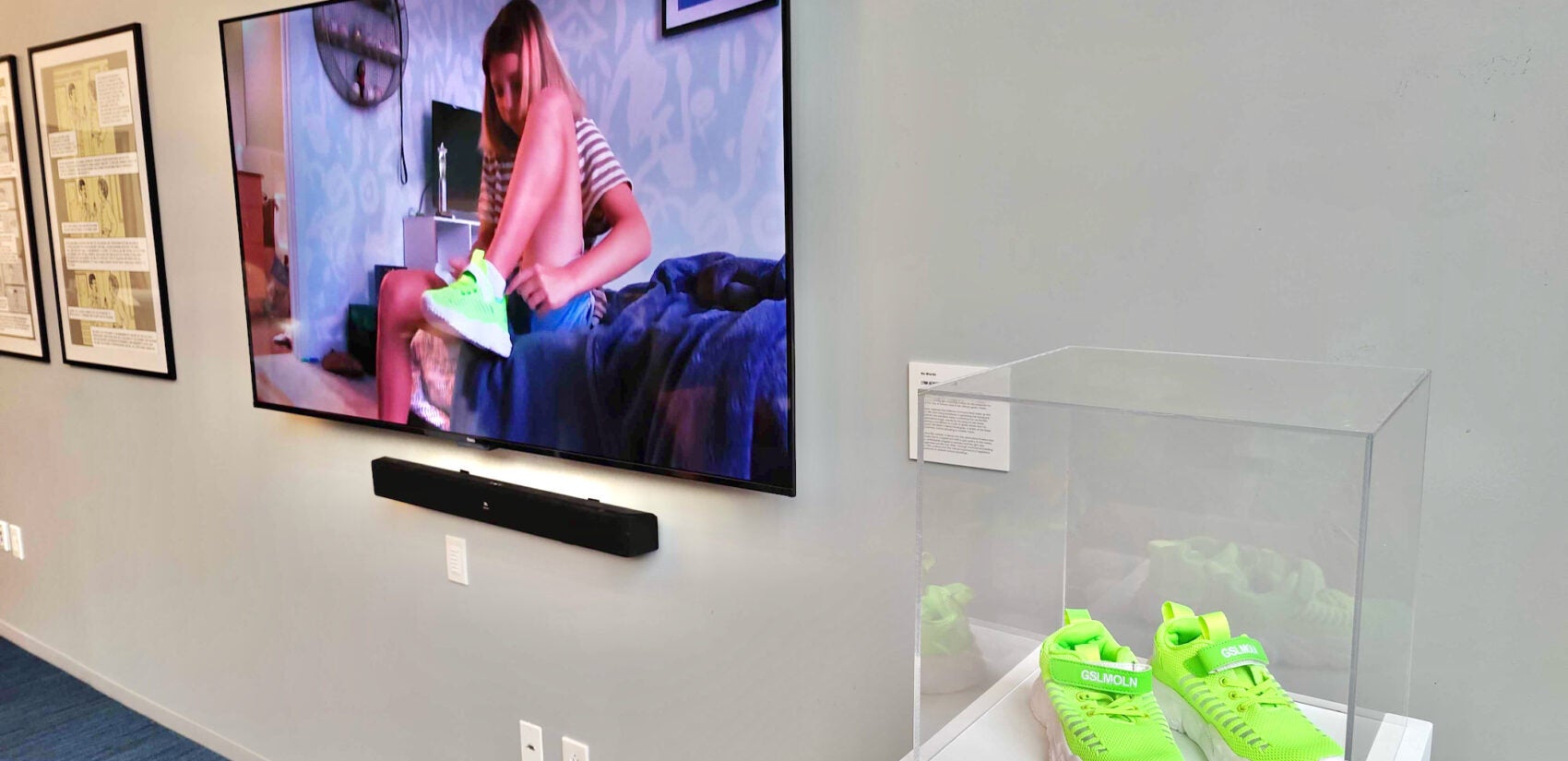
Tellingly, the girl dons neon-green sneakers. The same shoes are displayed under plexiglass next to the video monitor in the exhibition.
“No Words” references the green sneakers worn by Maite Yuleana Rodriguez, 10, shot dead during the 2022 school shooting in Uvalde, Texas. The shoes were the only clear evidence to positively identify her remains.
In Leeson’s vision of the future without guns, the girl wearing the green sneakers comes home.
“Futures Without Guns” will be on view until June 21.

Get daily updates from WHYY News!
WHYY is your source for fact-based, in-depth journalism and information. As a nonprofit organization, we rely on financial support from readers like you. Please give today.
